A day in the life of a mayor: Beyond public engagements, how CDCs work to serve the community
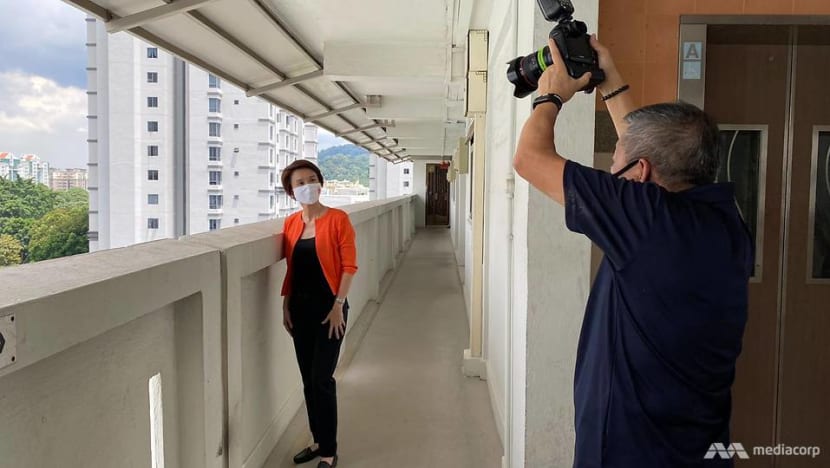
Mayor Low Yen Ling gets her picture taken after giving out care packs to residents in her district. (Photo: Cindy Co)
SINGAPORE: Between 8.30am and 2.30pm, Ms Low Yen Ling had already made five stops, crisscrossing the South West District.
The third-term mayor of the district visited a school, a senior activity centre, a Community Club, some Housing and Development Board (HDB) flats and a community garden.
The busy schedule is not unusual for Ms Low.
“It’s like leading a middle office where crucial goals and plans are set to meet the needs on the frontline, and also having to ensure all the back-end processes are in place too,” she said of her role as mayor. She runs the South West Community Development Council (CDC) and is also chairman of the Mayor’s Committee.
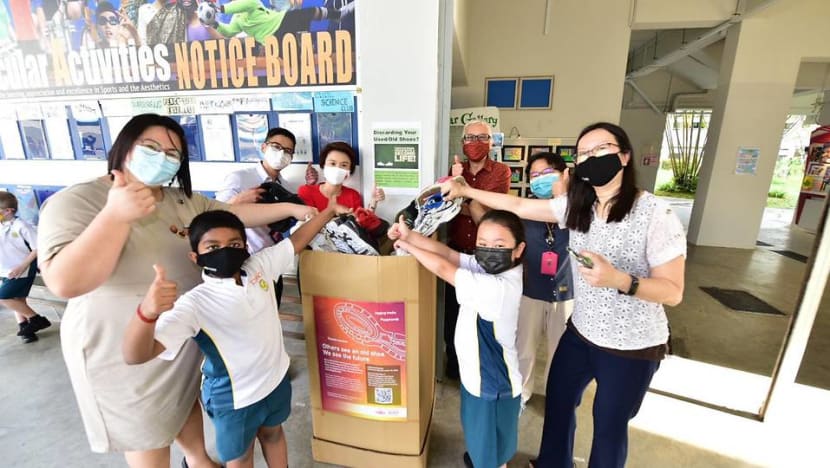
CDCs were set up in 1997 to build a “cohesive, compassionate and self-reliant community” in Singapore, according to the People’s Association.
There are five CDCs. Their aim is to work with government agencies, grassroots organisations, voluntary welfare organisations and partners from the public and private sector to support national policies and engage with residents.
READ: CDCs keep ‘low profile’ but are vital during crises, says PM Lee at swearing-in of mayors
Prime Minister Lee Hsien Loong had said at the swearing-in of mayors that although CDCs often keep a “low profile”, their contributions are vital during times of crisis.
Residents who are in need and do not know where to get help can turn to the CDC, Mr Lee said in September.
"The CDC can then assist them or redirect them, and lift some of the burden of navigating the bureaucracy off them," he added.
Apart from Ms Low, the other mayors are Mr Desmond Choo (North East CDC), Ms Denise Phua (Central CDC), Mr Alex Yam (North West CDC) and Mr Fahmi Aliman (South East CDC).
DAY OF ENGAGEMENTS
CNA followed Ms Low for a day to find out what a mayor’s role entails.
We started the morning on a Thursday at Lianhua Primary School in Bukit Batok. Ms Low spoke to staff members and students and posed for pictures as part of a handwashing event and a shoe donation drive with South West CDC’s long-time partner.
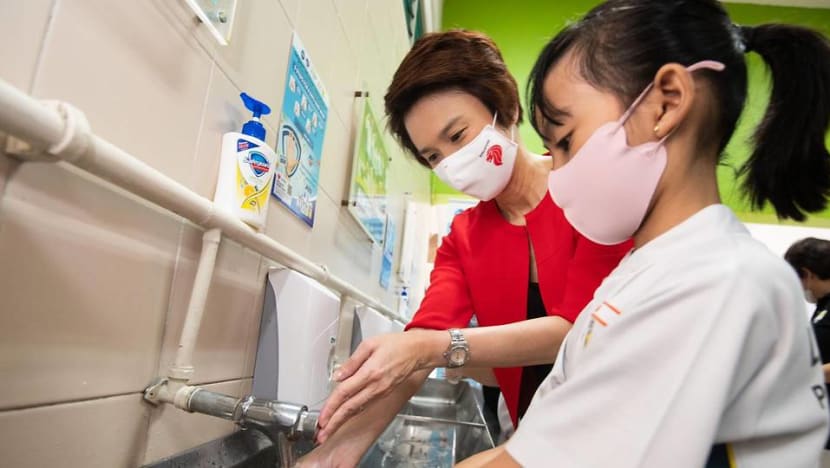
Then it was on to a Boon Lay Senior Activity Centre run by NTUC Health where she observed seniors at an art class. This was followed by a visit to Keat Hong Community Club, where she was given a tour of a job discovery fair for the sustainability sector.
I was given a short break for lunch before being taken to two blocks of flats at Bukit Batok, where Ms Low distributed care packs to residents at several HDB flats.
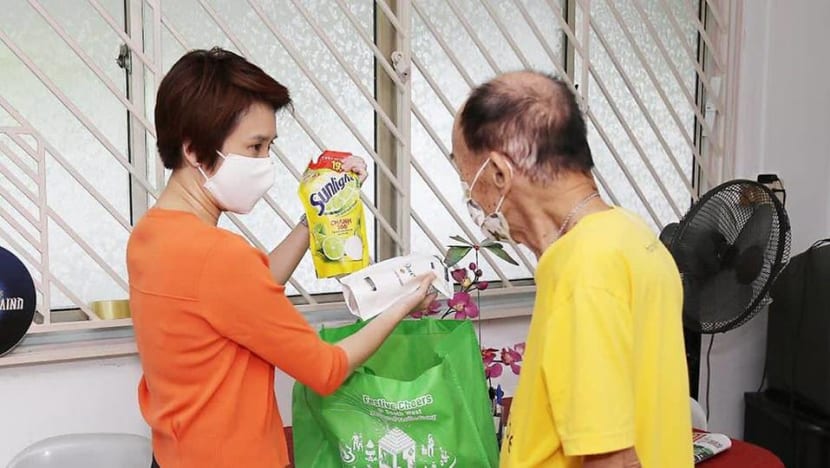
The final stop was a community garden where we harvested greens, including cabbages and long beans, from several gardening lots.
When asked about the common misconceptions people might have about a mayor's role, Ms Low said that rather than misconceptions, there may be lesser-known aspects of the job, such as needing to build relationships, having “pulse checks” and an “intimate understanding” of the community’s needs.
Underpinning the CDC’s duties - and by extension, the mayor’s - are two sets of "ABCs". Assist the needy, bond the people and connect the community; and aggregate resources, build capabilities and again, connect the community, she explained.
While the assistance schemes and bonding efforts can be very visible through, for instance, the CDC’s distribution of care packs and building community gardens, its efforts to aggregate resources and build capabilities often happen behind the scenes, she said.
“A lot of our work takes place behind the scenes, like aggregating, convening and putting together of resources to meet needs, and while this is not highly visible, it is important because it shapes the output and the co-creation of solutions,” Ms Low told CNA.
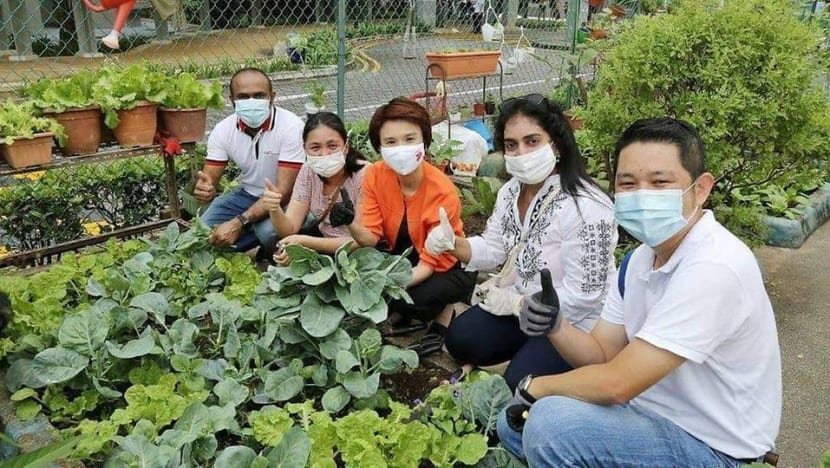
Earlier this year, Proctor & Gamble distributed 300,000 care packs to migrant workers, and later a further 10,000 care packs to needy residents in the South West District.
Ms Low noted that behind this initiative is the CDC’s work, where it negotiates with partners like P&G, identifies families who need help and requests the correct number of products.
The CDC also connects those interested in serving the community to the demographic that they hope to help.
“When an MNC (multi-national company) or local company says, I only want to work with children, immediately we know where to go … We know where to go because we know the demographic of our 770,000 residents, we know where the rental block that has a higher proportion of school-going children (are),” she said.
A reading programme for low-income children in the South West District, called Bringing Love to Every Single Soul (BLESS), is one organisation that has benefited from the CDC’s support.
“I meet some partners, I say, okay come, and immediately, we can help them to pilot on the ground and give them the necessary resources to get them started on the ground,” said Ms Low.

The most difficult part about a mayor, she said, is when she sees a child’s progress being set back.
“As a working mum … what breaks my heart is as we make good progress to uplift the lives of some of these families and to ensure that (the children) stay in school, sometimes an incident in the family may step the child back,” she said.
“And it’s very heartbreaking to see it because I could witness the good progress the child has made because of the collective efforts of volunteers from the community, from the VWOs, from the school - and because of an unfortunate incident, suddenly there’s long-term absenteeism.”
On the flip side, she is “most heartened” to see people who have benefited from the CDC’s initiatives come back to help out.
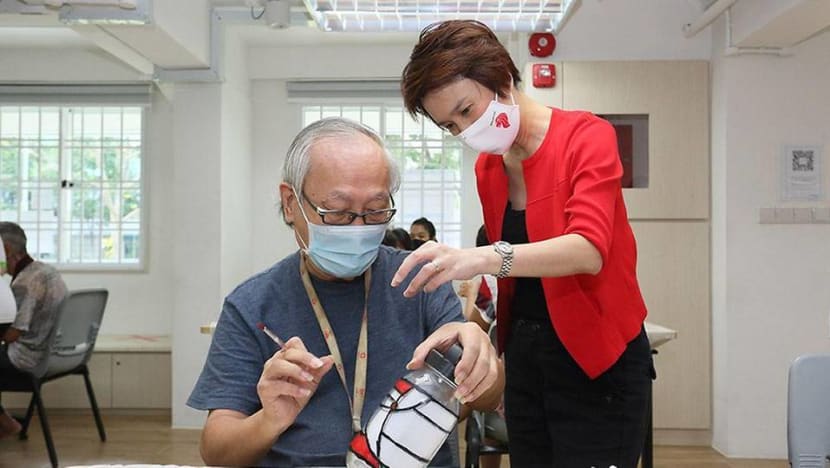
“There was this young girl, when she first joined the (reading programme), she was very young. But five years later, she became a da jiejie (big sister) to read to the younger group. And this is what we hope to see,” Ms Low said.
“And in South West, we have had instances where people who benefited from the system actually give back, and I think it’s very heartening to see.”














